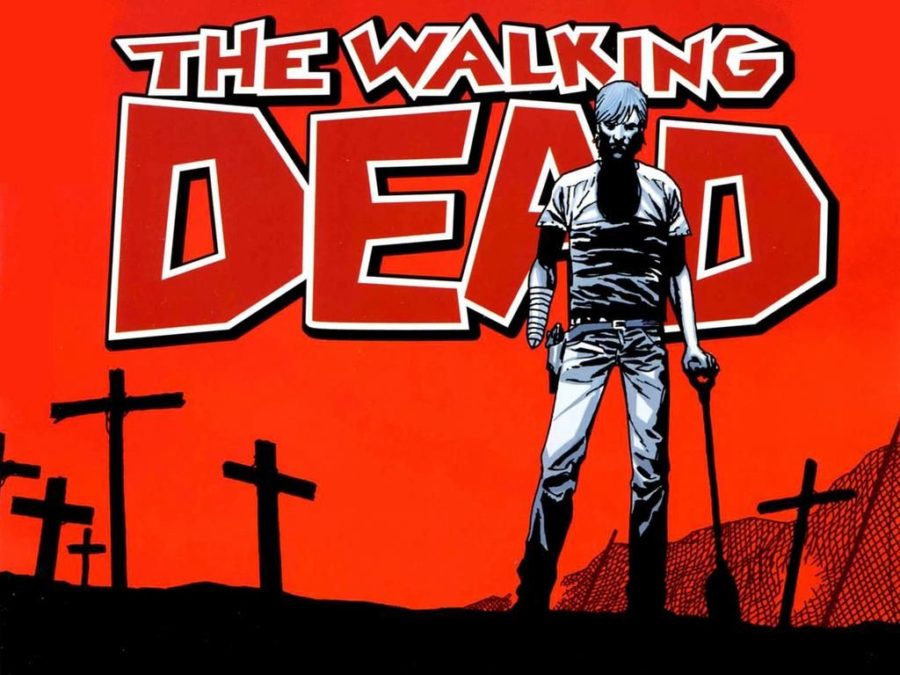Comics: Differences in The Walking Dead
In 2003, “Image Comics” created a horror title book under the name, “The Walking Dead.” Created by Robert Kirkman, the story centered around police officer Rick Grimes, and his fight for survival during a zombie apocalypse. With Image still not having taken off in the way it has today, along with Kirkman being an unknown at this time, the book was met with a short print run and low sales.
Flash forward to 2010, AMC, a cable television channel, acquired the rights to the Walking Dead stories, translating the comic into what they hoped would become a smash hit show. Luckily, not only was the show a huge success, but its popularity shot the sales of the comic through the roof, making it the top selling Image book, even to this day.
Now, in 2015, we have two versions of The Walking Dead, both comic and television (along with video games and spin-off shows that I wont be discussing), that are both critically acclaimed and commercially successful; I work at a comic shop and know how popular the book is amongst fans. But regardless of their individual successes off one integral story, the show and the book do have quite a few differences.
Characters
In the Image comic versus the television show, many characters are either dead, different, or completely absent from its counterpart. Television favorite, Daryl, does not exist at all in the comics, and was created by Kirkman for the television show solely, stating that he will not appear in the comic world.
Characters like Judith, Rick’s daughter, and Carol, bad-ass lady in the survival group, are examples of those who had died in the comic yet are still alive in the show. Reasonings for this vary, but mostly work in favor of keeping suspense ever-present in the show, something AMC needs to maintain to keep viewership that the comic does not necessarily has to have. It also works to make a creative difference between the comic and the show, offering perspectives into decisions the survivors make that the didn’t couldn’t have in the book because the characters are not alive.
Cosmetically characters are different between the two versions as well. Carl, Rick’s son, has an eye missing from a bullet he took to the face, while in the show his face is smooth-yet-messy from being on the run. Rick himself has no right hand in the comic, having had it cut off in an early issue, while in the show he has all his limbs.
Story
While both the comic and the television show share very similar overarching storylines, both deviate greatly from the other, in order to keep surprises and suspense from those who have seen/read the other versions. As the comic comes out years before the television adaptation of the story is filmed, AMC’s The Walking Dead is the one that deviates from the source material, allowing it to be its own monster (pun).
Some tweaks are made to the stories for the show that allow for interesting easter eggs and fun fan moments for those who read the comics, such as a character being killed during the show in a way that was the exact same way as another character in the book. This keeps viewers of The Walking Dead on their toes.
Violent Content
Yes, The Walking Dead is incredibly violent, so much so that both the book and the show have warnings for explicit content written all over them. But, in its defence, it is a series about people killing zombies, zombies killing people, people killing people, all in the name of survival. Yet, with both being very bloody, the violent content is fairly different between the two iterations.
The Image version has no binding on it, meaning that Kirkman as the owner and writer of the book can do whatever he wants with his characters, even if that includes having genital mutilation, explicit sexual content, mature vocabulary, and even the horrifying scene of the death of an infant. This content is, of course, not allowed on cable television, and therefore only in the comic version, deviating the two of them.
But, while the comic may be darker than the show, AMC’s version may be more gorey, having much more zombie hacks and slashes, blood, and even simple human drama than that of the Image title. And, while there is still plenty of action on the printed version, the show offers up more frequent zombie fights than the comic may offer.
Which is better
Regardless of their differences, both versions on The Walking Dead and fantastic in their own right. It really just depends on what someone as a viewer is looking for. And, while there may be many differences between the two iterations, both TWDs are worth diving in to.




